We intended to walk to Chatillon today, but the heat was intolerable and Tom’s left calf was playing up again, so at 3.30pm with only half the walk done we bailed out and got the train from Nus to Chatillon where we were already booked into an hotel.
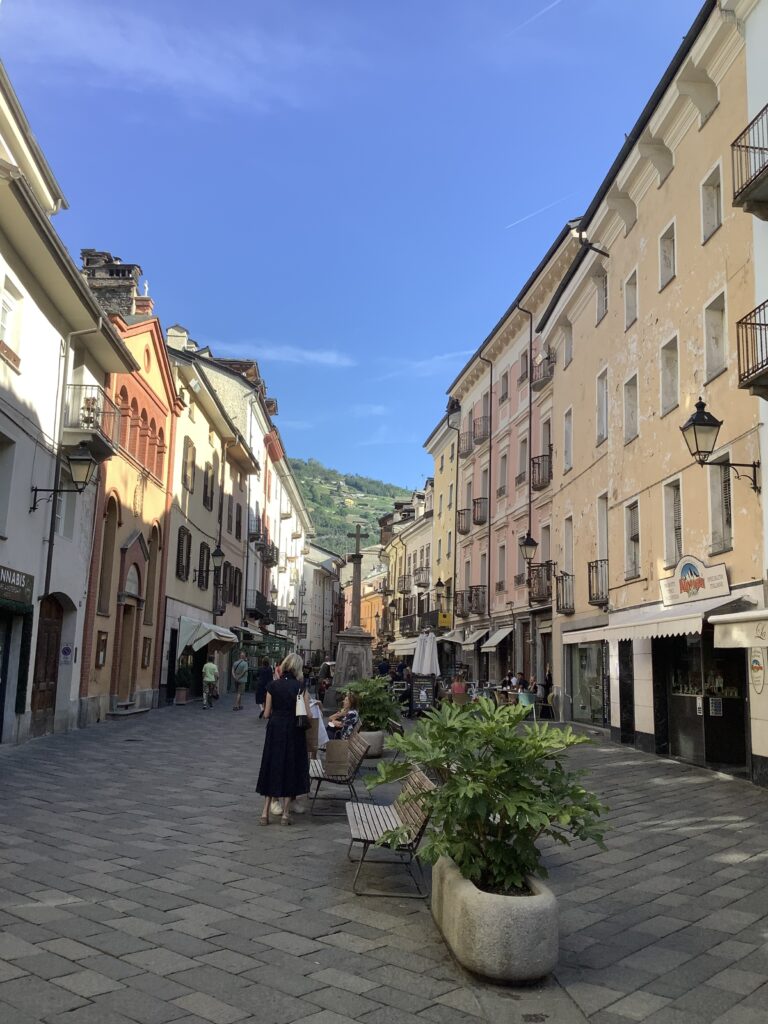
We decided to start walking as soon as we could, to try to beat the worst of the heat. Plus, we were facing a long day’s walk of about 28 kilometres. Moreover the forecast was for a very hot day. We read that the Italian government had declared a state of emergency in the Po valley on account of the predicted temperatures, extremely dry conditions. Unfortunately we couldn’t have breakfast at our B&B until 8am so we got packed beforehand and left straight afterwards. The route out of Aosta took us through the Praetorian gate again, and onwards over the Ponte Romano.
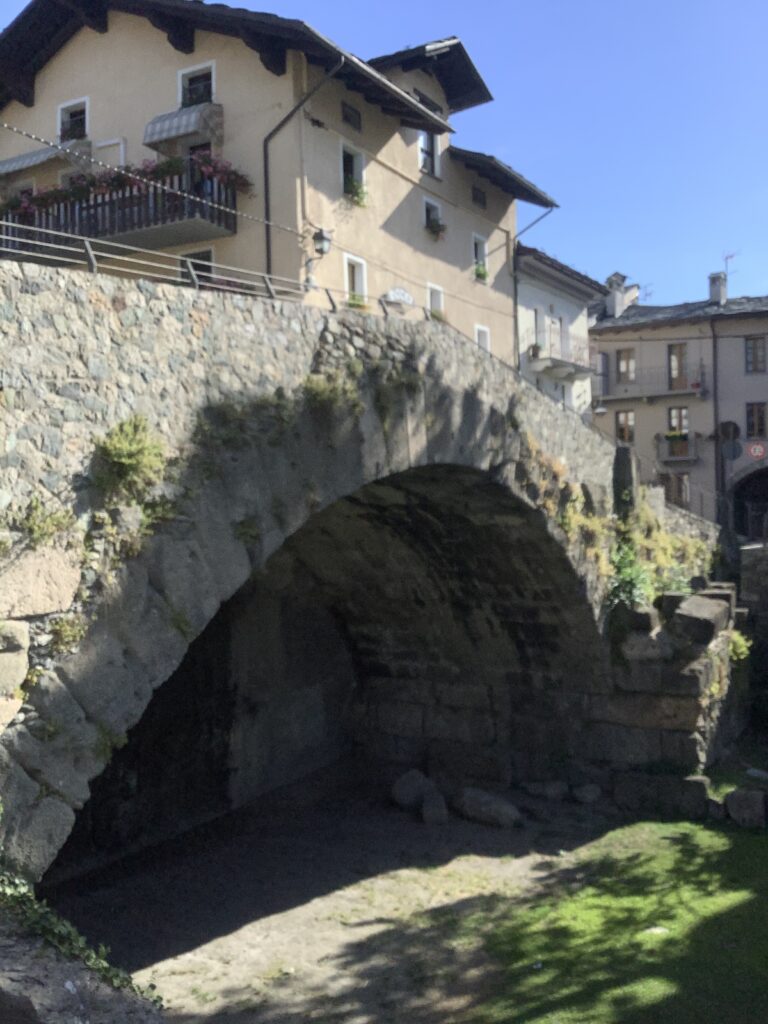
We then tramped urban streets for a while before getting out of town into countryside. We noticed that the whole valley is quite densely populated compared with where we’ve been over the last few days, but further away from Aosta there were farms and a few vineyards, though the latter were nothing like as dense as the Swiss vineyards on every possible space on the slopes.
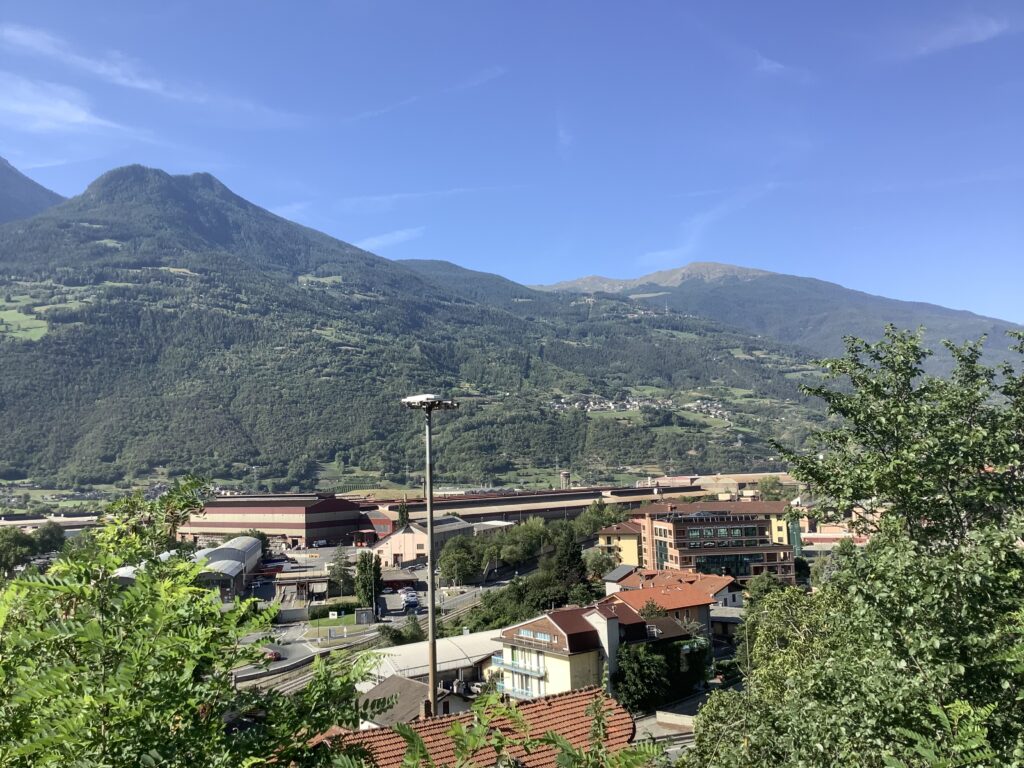
From the hillside we got a good view down over Aosta’s extensive steelworks which our hostess told us had attracted migrant workers from other areas of Italy, contributing to the loss of spoken French in favour of Italian in this area of Piedmont. Not that we had noticed that, as most people spoke French to us if they had no English. Our understanding of Italian is minimal at present.
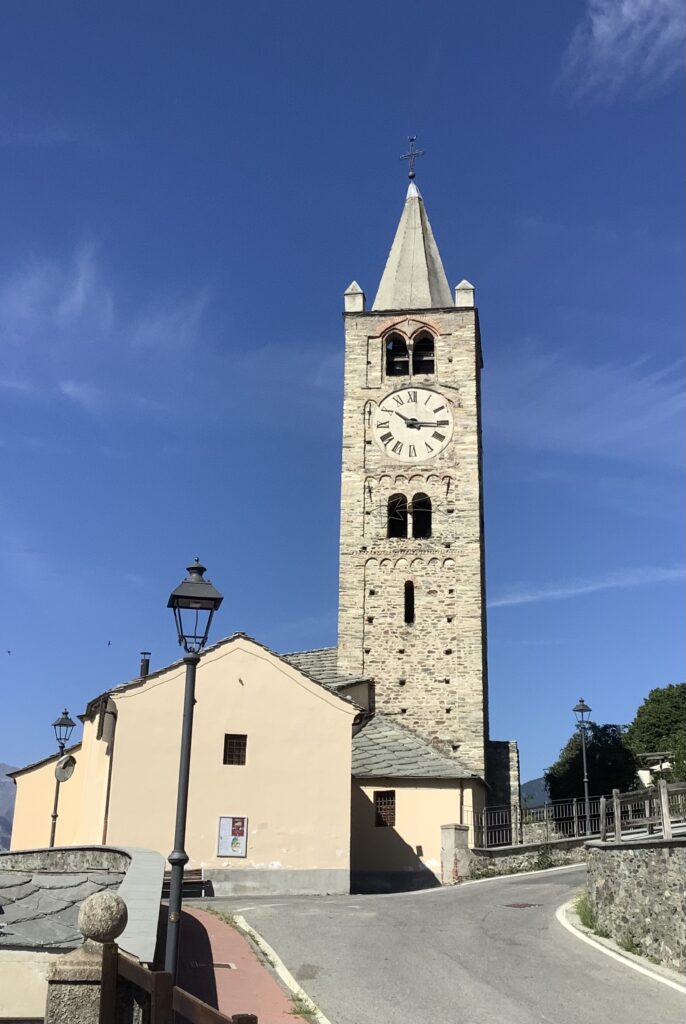
At the village of Saint-Christophe the church was closed and a couple were waiting outside, soon joined by others who were carrying musical instruments. A photographer then got set up, but as our rest period was over we moved on without finding out what they were doing or hearing their music making. We found out later that this 12th century church has recently discovered very old painted frescos, so it was a pity it was closed.
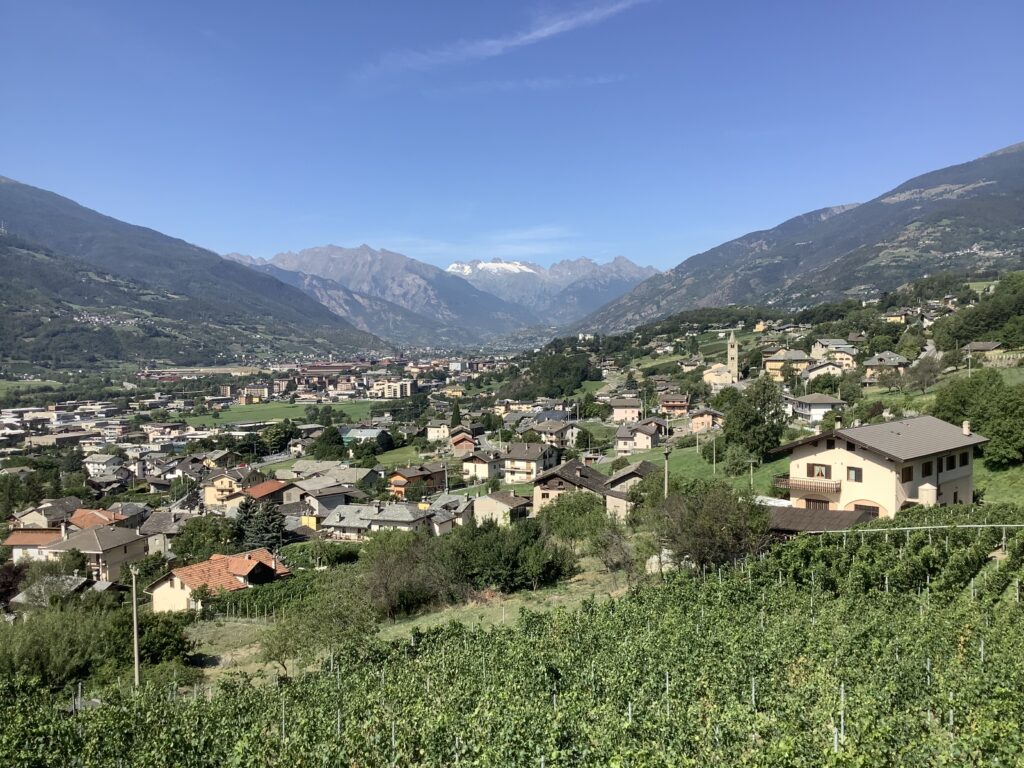
From Saint-Christophe we had a steep uphill climb to bring us onto a contouring path alongside a water irrigation channel like those we’d followed previously higher up the valley. This time, though, we were going against the flow, and it wasn’t just our imagination that we were gently ascending.

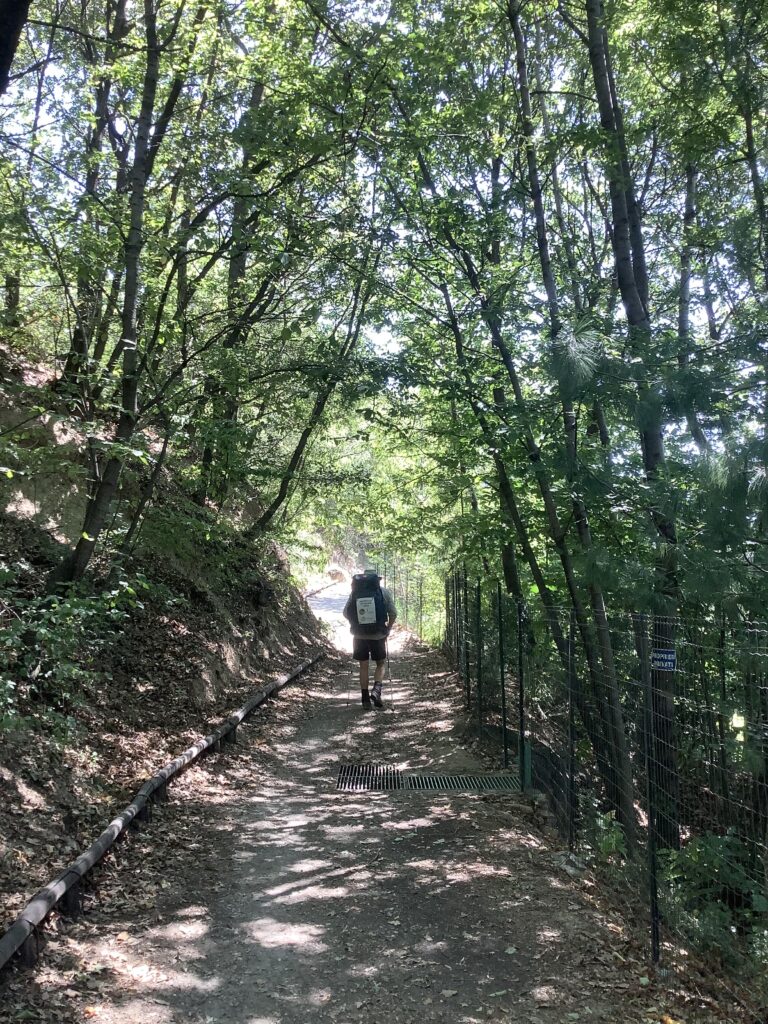
This irrigation system, known as the Ru Souverou et Prevot, also dates from the Middle Ages and, like the system up the valley, much of it has been put into pipes or concrete channels in place of the original stone and earthen channels.

At Quart we got a glimpse of the Monastere Mater Misercordiae hidden behind a high fence and big bushes. We were greeted by a man working in gardens nearby who enquired about where we’d come from and where we were going, before wishing us well with our pilgrimage. We weren’t sure whether he was one of the monks but appreciated his good wishes anyway.

A little further on we had to descend on a temporary path due to lots of notices declaring the path ‘privato’ and threatening consequences for trespassing, but that brought us past the Chateau du Quart, a handsome collection of stone buildings much in need of serious renovations. The chateau was originally built in the 12th century for strategic reasons, and latterly used as a farm. It has fallen into a bad state of disrepair, leaving its new owner with a big project but the prospect of a fine home with wonderful views along the Val d’Aosta.
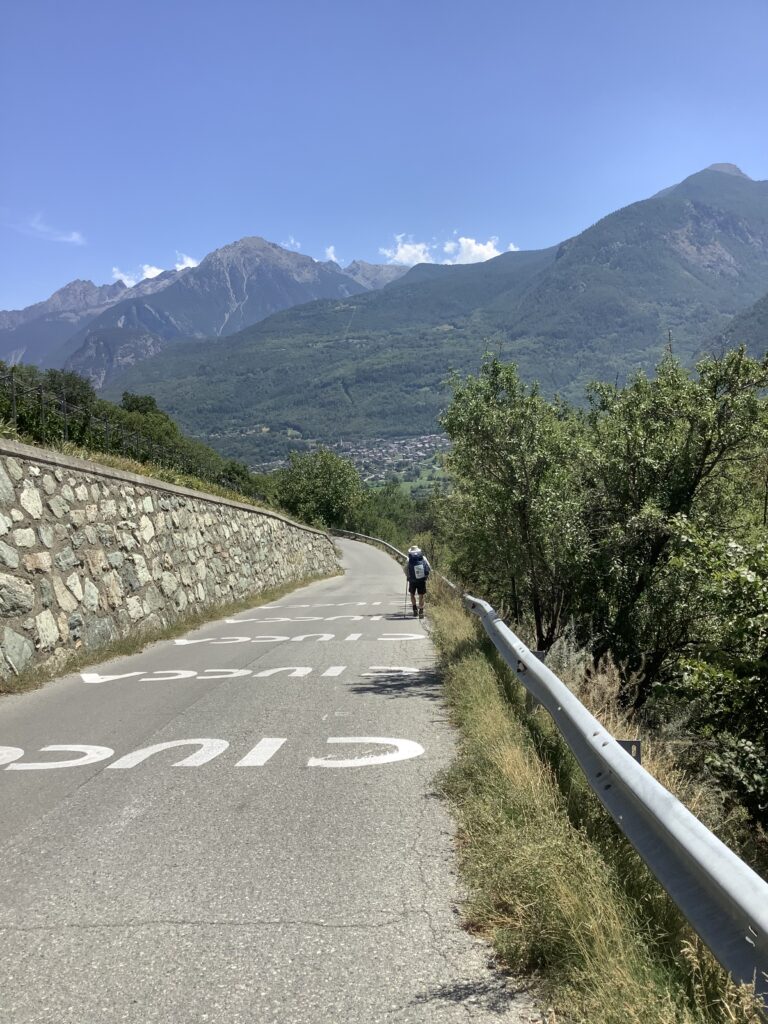
We had to walk along a minor road for a while and through a couple of villages. Judging by the paintwork on the road, this route has been used for cycling races, and the messages were giving encouragement to competitors tackling the steep hills around here. We sympathised, though no messages for us on the uphill climbs! Once through the villages we climbed back up and onto another section of medieval water irrigation channels, this one known as Ru Mazod, the name of one of the villages nearby.

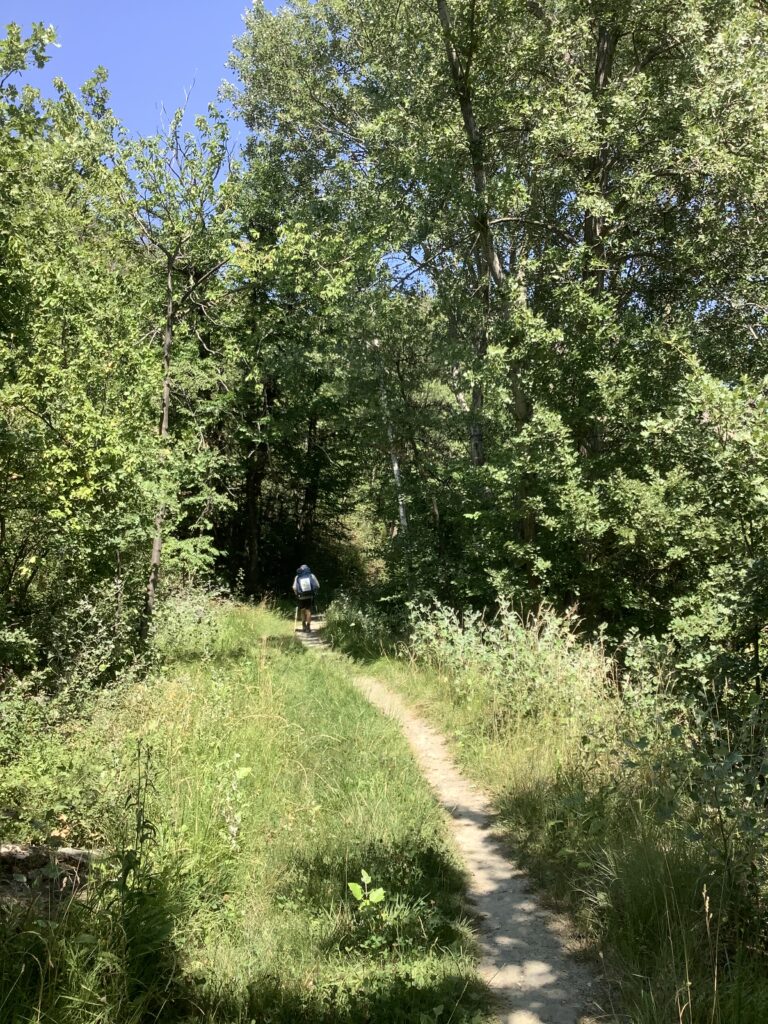
Much of this section of the walk was in shade, which we really appreciated as the heat of the day had become very oppressive despite a warm wind coming up the valley since lunchtime. There was just one short section which was also lush and green with meadow flowers, but mostly today the countryside smelled hot and made us think we were in South Africa or Australia, the vegetation was so dry, yellow, and sun-burnt.
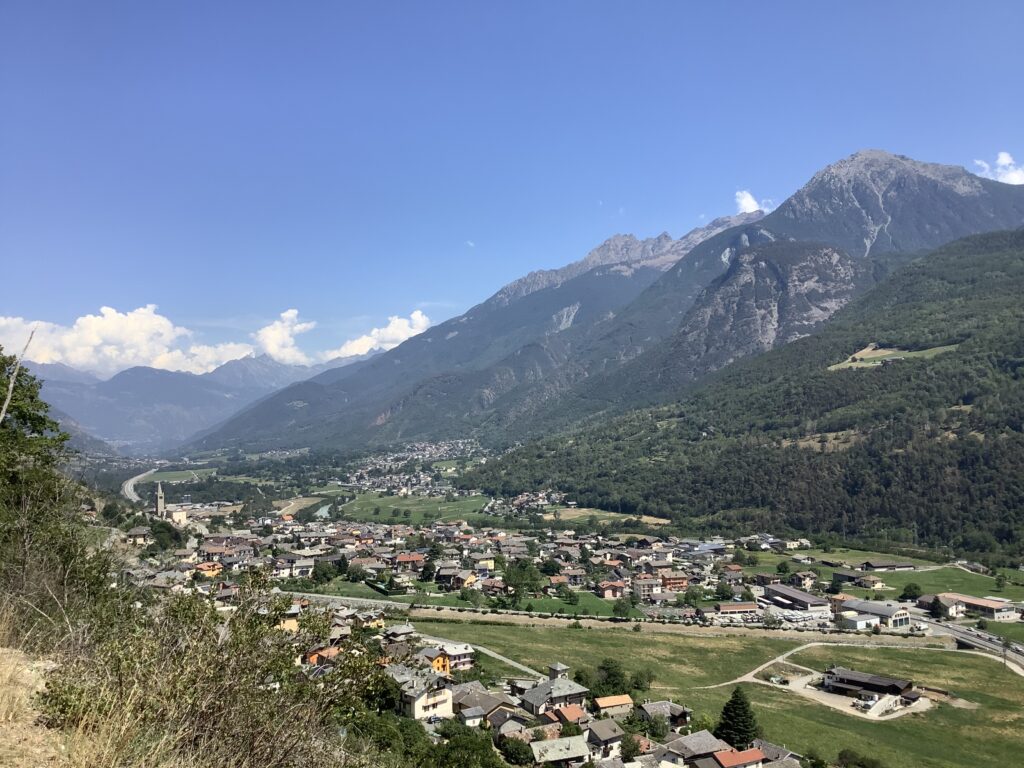
By mid afternoon we had only got as far as Nus, which is a little more than halfway from Aosta to Chatillon, and Tom had been struggling with pain in his left calf since mid morning. As there is a train station at Nus we decided to take the train onto Chatillon today, and then see how we feel about returning in the morning to complete the other half of the walk that we’ve missed out today.

First we had to negotiate a long and very steep descent, slithering and sliding down a narrow dirt path twisting and turning down the hillside, trying not to trip on stray tree roots or skid on loose pebbles.
By the time we’d walked down the streets into the centre of Nus near the river at the bottom of the valley we were about to miss the hourly train but, walking past a shop selling coffees and things used for drinking coffee, we noticed a pilgrim sign outside and were able to get our pilgrim passports stamped. The kind lady in the shop also directed us to a cafe/bar where we could get a long cold drink while waiting for the next train.
The train from Nus to Chatillon took about 10 minutes. The 12 kilometre walk would have taken us over three hours, even if Tom’s calf muscle had been up to it, so we made the right call. But we did have to climb steeply uphill about a kilometre from Chatillon railway station to the centre to find our hotel. It has no restaurant, and the bar is closed – despite online advertising to the contrary – but we found a good restaurant nearby which is very popular with the locals and it amply satisfied our need not to walk far to find supper.
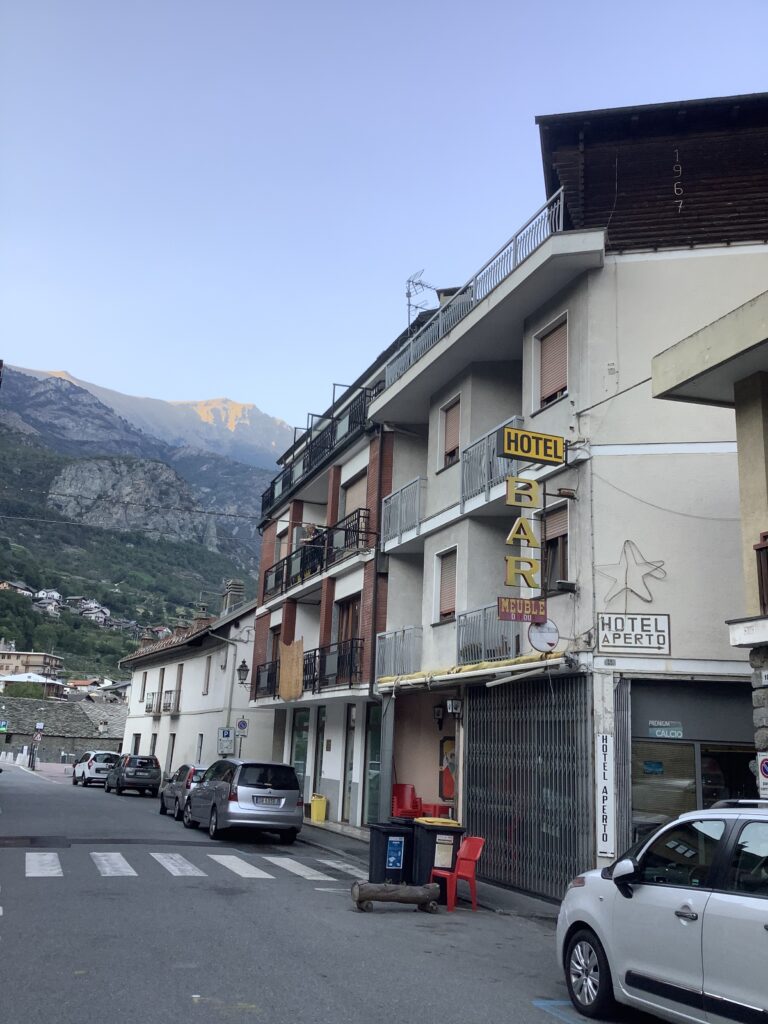
Today’s walk was a trial because of the extreme heat, lack of shade, lack of wind until early afternoon, and the physical impact of the pain in Tom’s calf muscle which also inevitably slowed us down. The views were quite good, but there is a lot of haze due to the excessively hot weather and the views didn’t begin to compare with the magnificent mountain scenery in the days before and after the Col. No one said this would be easy, or that it would all be enjoyable. Tomorrow is another day and we’ll see how we feel in the morning after a good night’s sleep and an ibuprofen or two.